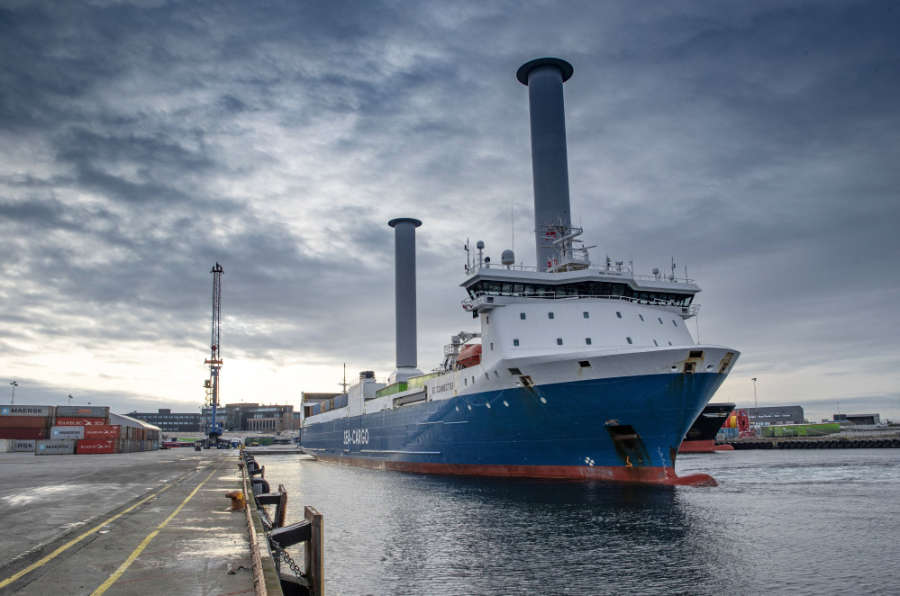Reducing emissions and offsetting the cost of higher priced alternative fuels dominated conversations throughout London International Shipping Week 2021. Jukka Kuuskoski, CSO of Norsepower Ltd contributed to these discussions at the Royal Institution of Naval Architects’ conference by presenting evidence of how Rotor Sails can form part of the solution.
The global shipping community faces enormous challenges in finding feasible and proven solutions to reduce their environmental impact and specifically fossil fuel related emissions. Norsepower’s Rotor Sails have been installed on a variety of ship types since 2014 and have been installed on bulkers, ferries and tankers and it is important to recognise there are important factors influencing the savings achieved by Rotor Sails.
Norsepower has developed a simulation programme which uses the Global Wind Atlas database for estimating the thrust performance of Rotor Sails on different routes. Simulation case studies are performed routinely for new customer projects to gain an understanding of the thrust performance and resulting emissions and fuel savings to be expected during the ship’s operations, particularly as wind conditions vary in different ocean areas and regions. The paper presented at the conference also highlighted the following case study:
SC Connector
Two 35x5m Rotor Sails were retrofitted on the ro-ro vessel SC Connector, owned by Norway-based shipowner, Sea-Cargo, in late 2020. The ship’s main sailing area is the North Sea, therefore wind conditions in the region are favourable and the potential for reducing the vessel’s fuel consumption and related emissions has proven to be around 25%.
The ship passes under several bridges on its regular operating routes, therefore a maximum allowed air draft limited the height of Rotor Sails with a fixed (non-tilting) foundation. This marked first installation of the tilting Rotor Sail model to enable installation of the largest Rotor Sails. This maximised the opportunity for the highest thrust performance and fuel savings. The tilting foundation module includes a hydraulically operated tilting system able to tilt the Rotor Sails to almost horizontal while the ship sails in a matter of minutes when needed.
During testing, the two Rotor Sails generated a maximum thrust force equivalent of 7MW propeller shaft power. Furthermore, the top speed peaked at 19.6 knots. The peak speed was achieved by Rotor Sail power (estimated at 7 MW) and approximately 3 MW from the main engine, demonstrating that the Rotor Sail generated more power than the installed main engine. This highlights that the vessel can transit faster on sailing alone, than with the installed main engine.
Norsepower estimates that Rotor Sail technology is technically applicable to approximately 30,000 vessels in the current global fleet of ships larger than 500 GT. The main requirement for suitability is available deck space for installation of the foundation. Other factors to consider are exposure to wind flow and availability of electrical power for the Rotor Sail. Economic feasibility is determined based on the ships typical operating area and operating profile.
Total CO2 emissions by emitted from shipping in 2018 was reported as 1.056 billion tons. Norsepower estimates that Rotor Sails could reduce the annual CO2 emissions by more than 80 million tons if they are installed on the entire available fleet.
Read about our latest paper on the demonstrated results of Rotor Sail installations on various ship types and the emission reduction potential of Rotor Sails in full here.


